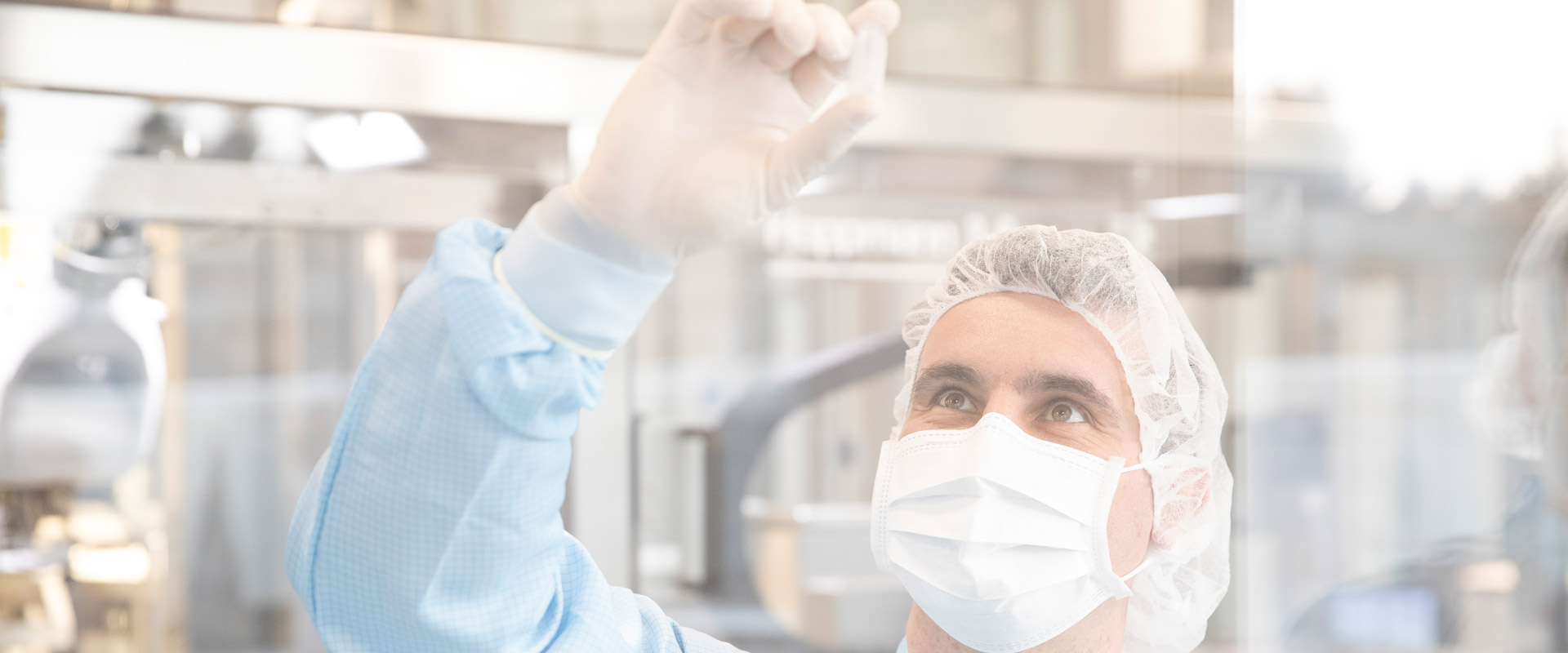Global growth
Healthcare is assuming increasing importance, driven by demographic change and the high rate of innovation in medicine. The market is expanding, that much is clear. But which fields and regions are experiencing particularly dynamic growth? Where are new opportunities arising – and where is the point of saturation fast approaching? And are the different markets inter-related in any way? We present a healthcare market analysis of the most important markets, fields and developments.
Regional growth market
The healthcare markets in what is known as pharmerging markets are set to grow by

This means that they will grow twice as fast as in the industrialized countries (2-5%), with growth in the USA at 4-7%, and in Germany at 2-5%. Pharmerging markets are defined by the US healthcare information company IQVIA as those countries with at least $1 billion absolute spending growth over five years and which have GDP per capita of less than $30,000 per annum. These criteria are satisfied above all by China and the Asia-Pacific region, where growth rates are correspondingly high in some cases. The healthcare market in Bangladesh, for instance, is set to grow by almost 20 percent per annum, while growth rates in Vietnam, Indonesia, Pakistan and India are forecast to increase by around 12%. Growth in China, however, is set to slow to 6% by 2022, partly as a result of the size of the Chinese market. The pharmerging markets also include a number of other countries, such as Brazil, Argentina, Egypt and Russia.
Medical technology
Spending on medical technology in the neurology sector is set to increase by

This makes neurology the fastest-growing field in the medical technology sector. This is accounted for in part by the expensive surgical systems increasingly used in brain surgery and the like. In terms of medical technology, the field of diabetes is also growing rapidly, at a rate of 7.8% per annum, followed closely by dentistry at a rate of 6.5%. The distribution pattern is somewhat different when the absolute figures are taken into account: because neurology is a comparatively small field, it comes in at the 13th position with an expected sales volume of $15.8 billion. The top spot is taken by in vitro diagnostics with $79.6 billion (+ 6.1%). The entire medical technology sector is expected to grow by 5.6% per annum by 2024, with sales reaching $594.5 billion.
Analysis on Top 10 Device Areas In 2024, Market Share & Sales Growth (2017-2014)

Spending on prescription drugs
Global spending on prescription drugs is set to reach

The current figure is $830 billion, not much more than the $737 billion spent in total in 2010. Between 2011 and 2017, spending on prescription drugs rose by just one percent per annum on average. But growth rates are now set to soar, rising six-fold to 6.4% per annum between 2018 and 2024. There are a number of reasons for this: extremely effective, extremely personalized – and consequently extremely expensive – therapies such as gene therapy will increasingly come onto the market. Gene therapy already costs hundreds of thousands of dollars per annum. Sales of orphan drugs – those used to treat rare conditions – are also set to double by 2024, when they will account for 20% of global spending on prescription drugs.
Diagnostics

Today, 2-3% of all healthcare expenditure is on diagnostics. This sector, however, influences 60-70% of all decision-making processes in medicine.
Take one simple example: the decision on whether a patient has to be admitted to the hospital for several days, at a potential cost of over a thousand euros, rests on the results obtained from a €12 thermometer. By the same token, a thermometer can also prevent a hospital admission. Diagnostics is therefore important for a number of reasons: ineffective and superfluous treatments can be prevented at an early stage, and the right therapy can be optimized, with the resulting benefits in respect of treatment quality. This, in turn, reduces costs, because a small amount spent on diagnostics can help ensure that the large sums spent on treatment are invested effectively. Diagnostics is likewise set to account for only a comparatively small proportion of overall healthcare expenditure in future – although it will influence the majority of healthcare expenditure indirectly. This renders it extremely important for all players in the healthcare system, from patients via doctors, nurses and health insurance funds to companies. And that is why research expenditure and the rate of innovation in this sector will remain consistently high. As revolutionary technologies such as genetic diagnostics, biosensors and liquid biopsies become more common, diagnostics will continue to change the face of medicine in the future.
Current Status Diagnostics:

Chronic diseases

of healthcare expenditure in the industrialized countries is spent on treating chronic diseases.
Chronic diseases, rather than acute, dominate the healthcare sector. This has been the case for years, and is in fact a sign of progress. People are living longer, and are increasingly developing chronic diseases as they age. If we look closely, we can see that the ostensibly static sector of chronic diseases is gathering momentum. Progress is ensuring rotation here: many illnesses that used to be fatal, such as certain forms of cancer, can now be treated so effectively that they have become chronic in nature, while other chronic diseases will be able to be cured completely with the advance of progress. Unfortunately a number of chronic diseases have been bypassed – such as diabetes, atherosclerosis and depression. These diseases will continue to account for a major proportion of healthcare expenditure in the future.
Research and development
Pharmaceutical and biotech companies are expected to spend

The market for R&D is, however, expected to grow slower between 2018 and 2024 (3.1% per annum) than it did between 2010 and 2017 (3.6%). This is not because companies are less willing to invest in R&D, however. The reason is a significant increase in efficiency. Big data and state-of-the-art analytics have now made it much easier to identify the future promise of an active agent at a much earlier stage, meaning that ineffective projects are discontinued much sooner than they used to be. This saves resources and allows companies to focus more of their efforts on potentially successful ventures.
Minimally invasive surgery
The market for minimally invasive surgery is expected to grow by

This market is thus set to grow over twice as fast as that for open surgery, which is expected to increase by just 4.1% per annum by 2020. Growth will be fueled in particular by products such as endoscopes and the respective accessories as well as by minimally invasive robotics.
Two types of market – Röchling is a player in both
When it comes to growth alone, the pharmerging markets (see above) are the target for companies in the sector: “The biggest growth is in the Asia-Pacific region. We have a global presence at Röchling and are well represented in the pharmerging markets. We are also investing heavily here presently,” says Mari Foley, Marketing Manager at Roechling Medical Rochester. At the same time, the company also has its sights on the industrialized countries, according to Foley. There are several reasons for this. On the one hand, people are living longer on average, and their medical needs are consequently increasing. Then there is the aspect of progress. Ina Baumgärtel, market analyst at Röchling Medical in Neuhaus, explains: “The rate of innovation and pressure to innovate are both higher in markets such as Germany and the USA. As a highly innovative company, Röchling is not just keeping up with its rivals here, but is setting the pace and helping to define the medicine of the future. Not only is this a lucrative business, but it fits in well with our self-image.”





